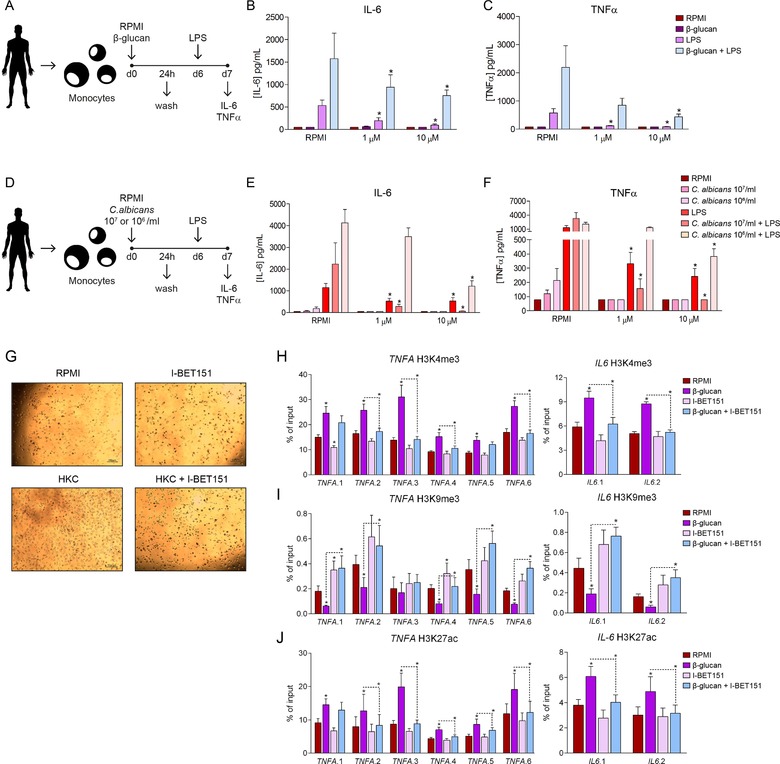Figure 3.

Effects of I‐BET151 in training of monocytes. (A) Scheme of the procedure followed in (B and C). IL‐6 (B) and TNF‐α (C) production by human monocytes treated with medium, 1 µM or 10 µM I‐BET151 and further stimulated with RPMI, 10 ng/mL LPS or 1 mg/mL β‐glucan for 24 h, followed by culture media. Where indicated, monocytes were re‐exposed to 10 ng/mL LPS after 6 days, and cytokines were measured 24 h later. (D) Scheme of the procedure followed in (E and F). IL‐6 (E) and TNF‐α production (F) by human monocytes treated or not with 10 or 1 µM I‐BET151 and stimulated with RPMI, 106/mL or 107/mL heat‐killed C. albicans conidia, or 10 ng/mL LPS followed by culture media. Where indicated, monocytes were re‐exposed to 10 ng/mL LPS after 6 days, and cytokines were measured 24 h later. (G) Morphology of cells after 24 h of training and 6 days of rest when the cells were trained with RPMI (negative control), 10 µM I‐BET151, 106/mL heat‐killed C. albicans (HKC) or 10 µM I‐BET151 + 106/mL heat‐killed C. albicans. Pictures were taken at day 6, magnification ×10. (H and I) Epigenetic effects of I‐BET151 treatment on β‐glucan‐trained monocytes. After 6 days of culture, H3K4me3 (H), H3K9me9 (I) and H3K27ac (J) marks were assessed at the level of promoters of TNFA and IL6. Mean ± SEM, n = 6 (from 6 different individual donors); pooled from two independent experiments with three individual donors each. *p < 0.05, Wilcoxon signed‐rank test.
